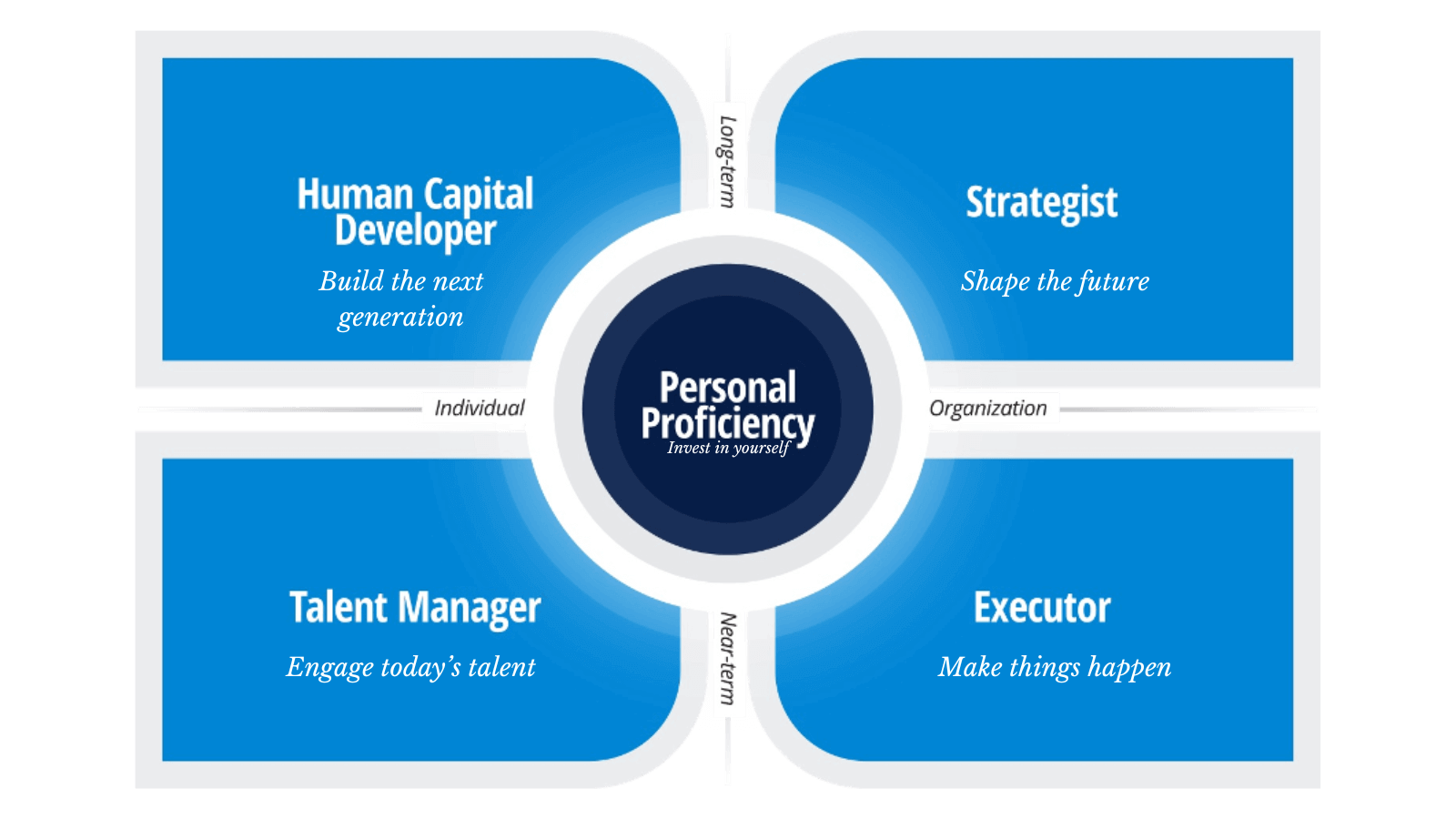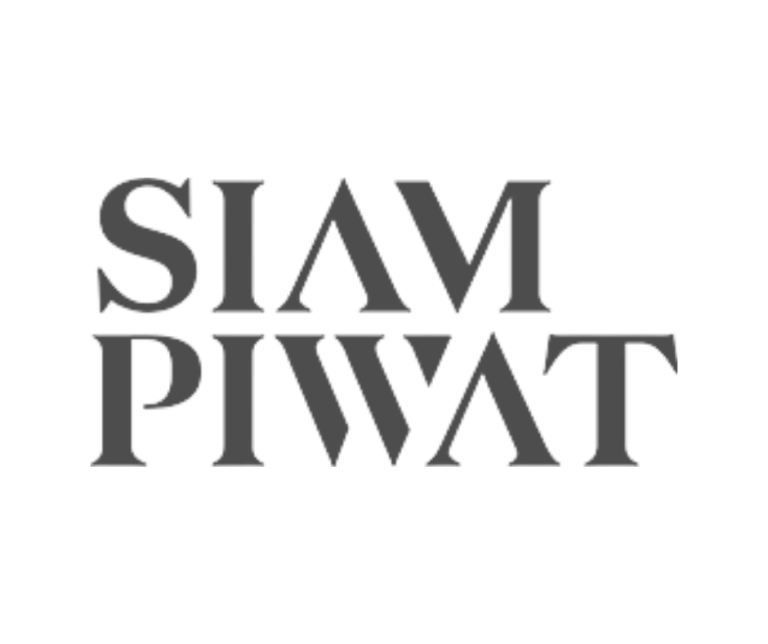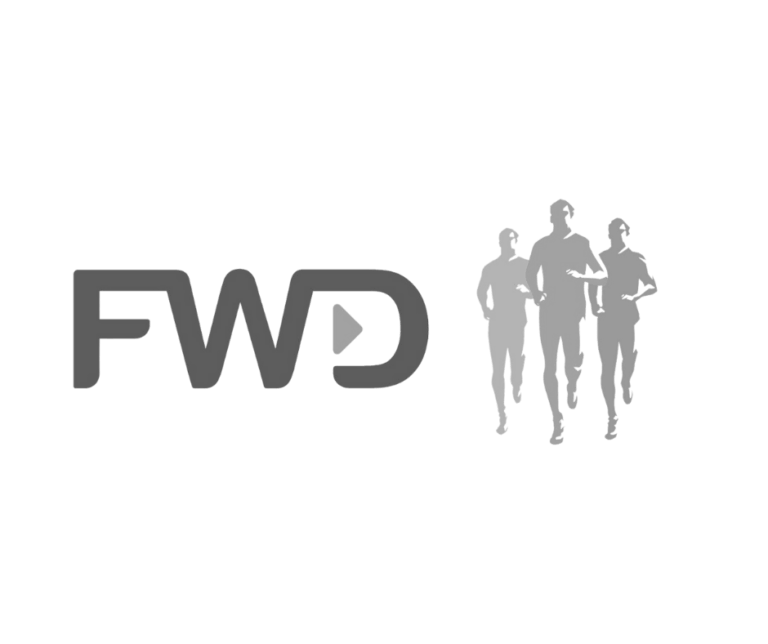The Leadership Code TRANSFERRING CAPABILITY. ACCELERATING RESULTS. BUILDING EFFECTIVE LEADERS
The Leadership Code is a research-based synthesis of the critical knowledge, skills, and attributes essential for effective leadership. It goes beyond providing endless lists of individual competencies possessed by the world’s most successful leaders by providing a unifying, contextual framework that translates the complex to the simple, the mundane to the meaningful, and the abstract to the actionable.

Effective leaders are made up of two parts. The first is a universal set of skills that applies to all leaders in any organization. The second part, the differentiators, are attributes that are unique to your organization.
1. The Leadership Code are the essentials that all leaders must know and do to be effective. Our research shows that 60-70% of effectiveness is the same for all leaders. These are the five domains of the leadership code: Strategist, Executor, Talent Manager, Human Capital Developer, Personal Proficiency
2. The Differentiators, these are the attributes that make your leaders unique to your company. Your firm brand identity (in the eyes of your best customers) must be made real to customers and employees through leader behaviors.
The RBL Leadership Code 360 Assessment helps your leaders know how well they’ve mastered the five fundamentals of exceptional leadership.
Without stakeholder perspective, development is limited. Leaders at all levels of the organization, from the C-suite to individual contributors, often have their own ideas of where they are weak and strong. Without perspective from the people, they work with and for these ideas can be shortsighted and development efforts can miss the mark.
By contrasting self-perspective with feedback from raters throughout the organization, including internal and external stakeholders, leaders come away with a comprehensive view of their strengths and opportunities in a simple, clear report. Leadership Code assessment reports include custom analyses, such as engagement of direct reports, potential pitfalls or derailers, and performance on top 10 critical leader behaviors. Leaders can see how their scores compare to high-performing leaders and read verbatim feedback from raters.
Leadership Code assessments help leaders better understand their performance in these five foundational areas. The assessment can also be customized to include questions based on your firm’s unique leadership differentiators so you can measure what really matters to your stakeholders and focus on issues that will have the greatest impact.
We use assessment along with Leadership Code Workshops, our development modules are built on the five domains of the Leadership Code. These workshops are taught using a variety of interactive and engaging approaches appropriate for the level of the audience, including video cases, business simulations, mini-lectures, client cases, and group exercises. Each of our workshops requires that participants apply what they are learning to help them better deliver expected results.
ADGES can provide a debrief and insights into the assessment results as well as help with establishing an individual development plan based on the results.
The RBL Leadership Code® is a research-based synthesis of the five critical domains of knowledge, skill, and attributes essential for effective leadership: strategy, execution, talent management, human capital development, and personal proficiency.
1. Strategists
Strategists keep the long-term perspective on the organization in the competitive landscape at the forefront. They enjoy living in the abstract and future world of strategy and are abreast of changes in technology, demographics, and geo-political realities that will affect the organization, its customers, and how it creates value. They can clearly articulate a vision that is exciting and energizing for the organization and create strategic traction that gets the strategy implemented. They create consensus around how best to organize and respond to achieve the vision.
2. Executors
Executors keep the near-term perspective on the organization in the competitive landscape at the forefront. They enjoy living in the concrete and actionable world of execution and are clear and decisive in getting things done through the people in their organization. They set clear priorities and accountabilities and get things done.
3. Talent Managers
Talent Managers keep the near–term perspective on the people in the organization at the forefront. They know that it is the talent in the organization that will allow it to achieve its goals and ensure that people have what they need to deliver those goals. They create an open, positive leadership climate that engages employees’ hearts, hands, and minds.
4. Human Capital Developers
Human Capital Developers keep the long-term perspective on the people in the organization at the forefront. They keep a clear line of sight between the future strategy and the skills and competencies that will be required to deliver that strategy. They are gifted coaches and sponsors who know how and why to develop the right talent for the future.
5. Personal Proficiency
At the core of the Leadership Code are the personal qualities and characteristics of the leader, or personal proficiency. Your ability to lead others begins with yourself. If you are not grounded through your values and beliefs, credible through your judgment and thinking, emotionally mature through your ability to self analyze and connect with others, and willing to learn and grow as a leaders, you will not be able to be a strategist, executor, talent manager, or human capital developer.
Each domain includes critical competencies required to execute the activities required for sustained organizational performance.
What are my strengths that strengthen others and my weaknesses that matter?
The 360 Feedback workshop helps participants take the results of their 360 Assessment to meaningful action. It focuses on helping participants understand the full requirements of leadership (the Leadership Code, plus the unique differentiating competencies), more clearly understand their leadership strengths and weaknesses, and craft a development plan that will improve their effectiveness in delivering the required results.
OBJECTIVES:
1. Preview the leadership academy experience and objectives.
2. Understand the competencies and behaviors required for effective leadership.
3. Assess strengths and weaknesses in each of the Leadership Code competencies.
4. Identify the competencies most relevant for their current position and future goals.
5. Create a structured change action plan to improve the leadership behaviors
OUR CLIENTS REFERENCES ARE INCLUDED:
- Leadership Code 360 | Siam Piwat
- Leadership Code 360 Assessment | Teach for Thailand
- LeaderX | CardX
- 360 clients: Leadership Code Workshop | Securities and Exchange Commission
- Leadership Code Workshop | FWD Life Insurance







